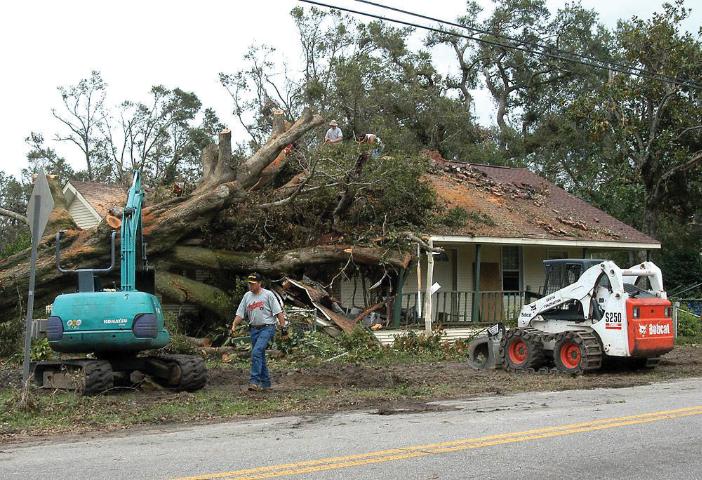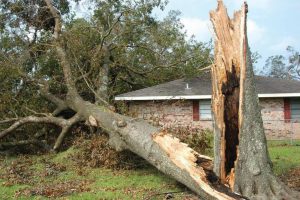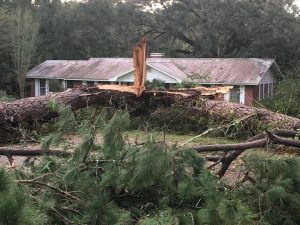Trees have a pretty bad reputation in north Florida these days.
They’re on our homes, cars, streets, power lines and all over the yard, causing a lot of grief.
While my heart goes out to all of those dealing with trees in places they shouldn’t be, now’s a good time to remember all the reasons we should want trees around. It’s also a good time to review ways of minimizing tree impacts from future storms.
Benefits of Trees
Beyond being a huge source of oxygen, necessary for many organisms to live, trees provide myriad other benefits, as well. For instance, Tallahassee’s urban trees alone remove approximately three million pounds of pollutants each year, according to a recent study. Carbon monoxide, nitrogen dioxide, ozone, sulfur dioxide and particulate matter, are among the pollutants cleaned by area trees.
The same report calculated that half a billion gallons of precipitation was intercepted by these trees instead of becoming stormwater runoff. This reduces the impacts of erosion and non-point source pollution.
The annual benefits of the trees in the study amount to more than $15 million, the study calculated! Furthermore, researchers have found that trees increase residential or commercial property values by an average of seven percent!
Ways to Minimize Tree Failure
When choosing replacement trees for those that fell victim to Hurricane Michael, do so wisely.
While very few trees can withstand sustained winds of 155 mph, replanting trees sooner will help communities see the aforementioned benefits more quickly and help your neighborhood return to its former beauty.
Even the most wind-resistant trees are likely to fail in a storm like Hurricane Michael. Researchers with the University of Florida Institute for Food and Agricultural Sciences have found the following species to be among the most wind resistant: hollies (Ilex spp.), southern magnolia (Magnolia grandiflora), live oak (Quercus virginiana), cypress (Taxodium spp.), cabbage palm (Sabal palmetto) and sparkleberry (Vaccinium arboreum).
The least wind-resistant trees include: pecan (Carya illinoiensis), tulip poplar
(Liriodendron tulipifera), laurel cherry (Prunus caroliniana), laurel oak (Quercus laurifolia), water oak (Quercus nigra), southern red oak (Quercusfalcata), red cedar (Juniperus virginiana), pines (Pinus spp.) and Chinese elm (Ulmus parvifolia).
When replanting, consider planting at least three trees in a group rather than an individual tree, as researchers also discovered trees in groups fared better.
Tree Care
With existing trees and newly planted trees, taking good care of the tree can help it withstand high winds. In addition to proper pruning techniques and providing adequate root zone space, paying close attention to minimize soil compaction and root zone disturbances will help create a stronger root system, less likely to be uprooted or toppled by high winds.
Older trees should be regularly monitored for potential signs of decay.
The University of Florida Institute of Food and Agricultural Sciences offers a wealth of resources related to tree health and storm recovery. Visit ifas.ufl.edu or stop by the North Florida Research and Education Center, 155 Research Road, Quincy.
Let’s not allow our frustration with the tree on the roof to prevent us from recognizing that trees are good.
By Mark Tancig
mail@prioritynews.net
All photos courtesy Mark Tancig



